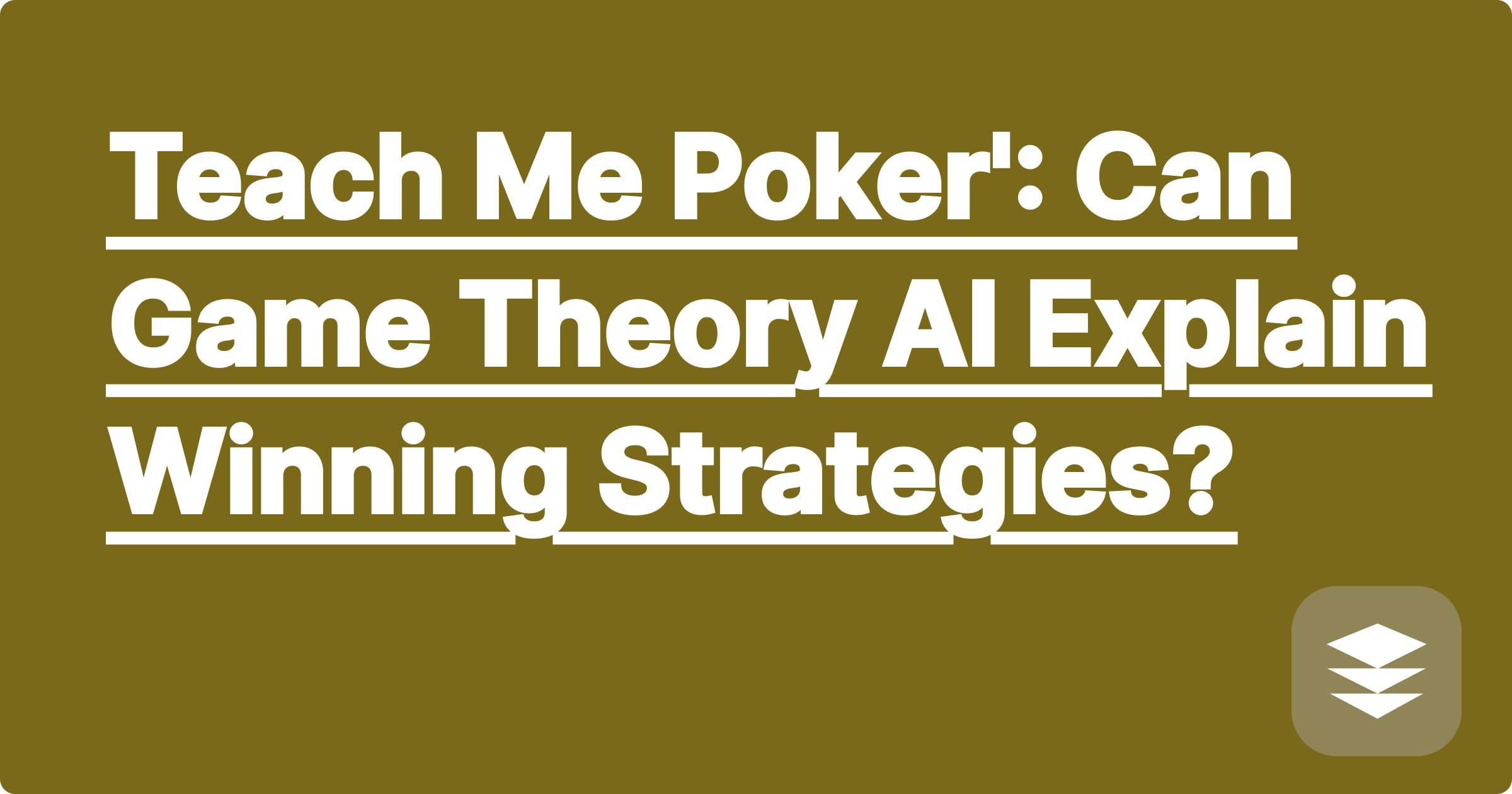
Poker is a game of skill, psychology, and luck. But at its core, it's a game of mathematics. Professional poker players don't rely on gut feelings; they use game theory to make decisions with a positive expected value over the long run. Concepts like pot odds, combinatorics, and Nash equilibrium are their secret weapons. For many people, however, learning this mathematical side of the game is intimidating. Where do you even start if you want to learn poker with game theory?
You can read a book about game theory, but it's often hard to apply those abstract concepts to a specific hand you're playing. You might know the definition of "pot odds," but calculating them quickly in the middle of a tense hand is another matter entirely. You need a practice partner who can connect the theory to the application, instantly.
An AI assistant like GPAI Solver can be your personal poker coach. While it's not designed to play against you, it's an incredible tool for analyzing specific scenarios and explaining the underlying math. It can act as a powerful ai strategy generator by explaining the optimal, data-driven play.
Start with a fundamental concept.
120(120(100 + $20). You have to call $20 to win $120. Your pot odds are 120-to-20, which simplifies to 6-to-1. This means you need to have a better than 1 in 7 chance (about 14.3%) of winning the hand at the showdown for your call to be profitable in the long run."Now apply the concept to a real hand.
[Image: A clean graphic showing a poker table scenario with a pot size and a bet, next to the GPAI Solver interface calculating the pot odds and required equity for the call. Alt-text: An AI poker strategy generator explaining pot odds.]
You can scale up the complexity. The AI can help you understand more advanced concepts:
Use GPAI Cheatsheet as your note taker to build your ultimate poker reference guide. Create sections for:
A: It can explain the mathematics of bluffing. You can ask, "If I bet $50 into a $100 pot, how often does my opponent need to fold for my bluff to be profitable?" The AI will calculate the required fold equity (in this case, 50 / (100+50) = 33.3%). This data-driven approach is how professionals think about bluffing.
A: No. GPAI Solver is a calculator and an explainer. It does not play the game and cannot be used during live play. It is a learning tool designed to help you analyze situations and master the mathematics of the game away from the table.
Poker is a game of making better decisions than your opponents. By using an AI to master the underlying game theory, you can move away from guessing and start making data-driven, profitable plays. It's the fastest way to elevate your game and start thinking like a pro.
[Start learning the math behind poker today. Use the GPAI Solver to understand game theory. Sign up for 100 free credits.]
What if Newton Had an AI? How 'Principia Mathematica' Could Be Written in a Week
Could You Run a Simulated Mars Colony Using an Engineering AI Solver?
Teach Me Poker': Can Game Theory AI Explain Winning Strategies?
What if Your Entire Degree Was an Open-Book Exam? How to Prepare with AI.
Re-writing History: What if the Titanic Was Designed with FEA and AI?
The Psychology of the 'Humanizer': Why We Trust 'Natural' Language More
A Day in the Life of a GPAI Engineer: The Problems We Solve for You
We Fed Our AI the Toughest 'Unsolvable' Math Problems. Here's What It Did.
The Carbon Footprint of Your Brain vs. AI: An Energy Efficiency Comparison
Bad Handwriting' Hall of Fame: Can Our AI Read Your Professor's Scrawl?